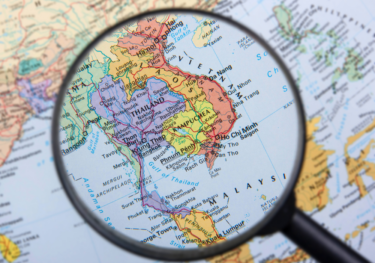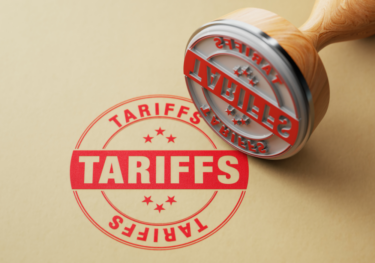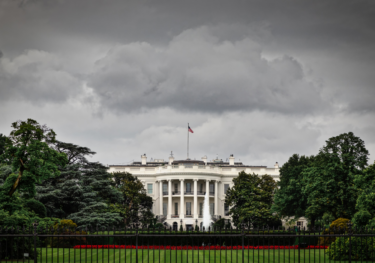Tariffs and Their Global Impact: A Note from the Desk of our Chief Economist
On 2 April 2025, the US Administration announced a set of tariff increases, bringing the US back to levels of protectionism last seen in the Great Depression era. Subsequent days have seen many tariffs postponed, while others increased, so the situation remains fluid.
This shifting trade policy is set to have far-reaching implications for the global economy, affecting various sectors and countries differently. As businesses and policymakers navigate this new landscape, understanding the potential outcomes is crucial.
In light of these developments, we are actively incorporating the impact of the tariffs into our forecasts, to be updated 15th April.
Here’s a breakdown of the key insights from the latest research:
A Return to Protectionism
The newly announced tariffs are more severe than previously anticipated, with rates exceeding those modelled in our earlier scenarios.
Varied Global Impact
The effects of these tariffs will not be uniform across the globe. Different countries and regions will experience varying levels of impact, with some economies more vulnerable due to their reliance on exports to the US. As nations begin to announce retaliatory measures, the landscape of global trade is poised for upheaval.
See how Oxford Economics can help you navigate the tariff changes
Get in touchIf these tariffs remain in place, we can expect a substantial downgrade in growth forecasts for both the US and the global economy. While a recession may be avoided, world trade volumes are likely to suffer significantly, affecting economic performance through 2025 and beyond.
- China: The tariffs represent a significant challenge for China, likely prompting a fiscal response that may not fully counteract the negative economic impacts.
- Eurozone: The Eurozone could see a reduction in GDP growth by 0.2 to 0.3 percentage points due to the new tariffs. While a full retaliation from the EU is not anticipated, targeted responses may emerge, affecting investment and economic stability.
- UK: The UK’s growth forecast has been downgraded, with expectations now below 1% for this year. The primary impact will stem from weakened US and global demand, alongside heightened trade policy uncertainty.
- Asia-Pacific: Countries like Vietnam, South Korea, and Taiwan are particularly vulnerable due to their trade dependencies. Conversely, India and the Philippines may be better insulated from the tariff shocks.
- Latin America: While the region is largely spared from the brunt of these tariffs, the overall impact on growth forecasts cannot be overlooked. With a minimum 10% tariff applied to most countries and a generally low dependence on US exports, the effects may be limited but still significant.
Sector-Specific Consequences
The implementation of these tariffs will have sector-specific repercussions, dampening sentiment across various industries. Our initial assessments suggest that while a global recession might be avoided, the economic fallout could still be severe, particularly for sectors heavily reliant on trade.
Practical Implications
Businesses should prepare for heightened uncertainty and potential shifts in market dynamics. Understanding the specific impacts on your sector will be vital for strategic planning and risk management.
For a comprehensive analysis of these tariffs and their implications, please view our latest tariffs research and upcoming webinars.
Updated 14 April 2025.
Upcoming Webinars

Asia reacts to US tariffs
We draw the implications of tariffs for Asian economies, in particular how the movement in financial markets may affect real economic outcomes.
Find Out More
トランプ関税下の世界経済:経済モデルを用いたシナリオ分析
今次ウェビナーの前半では、トランプ関税下、最新の世界および日本経済見通しを説明します。当社では、一連の関税の発表を受け、米国の2025年の成長率見通しを従来の2.0%から1.2%へと大幅に下方修正、日本経済についても、今後、2026年前半までゼロ成長を強いられるという見通しに変更しました。内外経済・物価の先行き不透明感が増すなか、日銀は利上げサイクルを一時停止し、次回の利上げは2027年にずれ込むと予想します。 後半では、各国の関税政策をめぐる不確実性の高さを踏まえ、当社マクロ経済モデルを用いたシナリオ分析を紹介します。実際にモデル上の「関税レバー」を操作し、「相互関税」の復活や、グローバルな関税の応酬激化を想定した場合の世界経済・金融市場・コモディティ市場への影響を、波及経路を確認しながら検討します。
Find Out More
Trump 2.0: Global Trade, Tariffs & Economic Shifts
In part two, of our Trump 2.0 webinar series, we explore the international consequences of President Trump’s return to power. With initial tariffs far exceeding expectations, we will discuss renewed tariff tensions, shifting alliances, supply chain disruptions and global market uncertainty. We will examine how the first 100 days have shaped the global economic landscape — and what the ripple effects may be in the months to come. We’ll focus on cross-border trade, sector-level impact, climate and the evolving role of the US to its neighbours and globally.
Find Out More
Trump 2.0: US Economy & Policy Shifts
In the first session of our Trump 2.0 series, we turn our attention to the domestic landscape. We unpack how Trump’s early policy actions — from fiscal shifts and labour market interventions to immigration and industry-specific changes — are affecting the U.S. economy, and how tariff policies will impact local markets. We assess the immediate and longer-term consequences for states, cities, sectors, and tourism, and consider what lies ahead as the administration’s agenda takes shape.
Find Out MoreTags:

